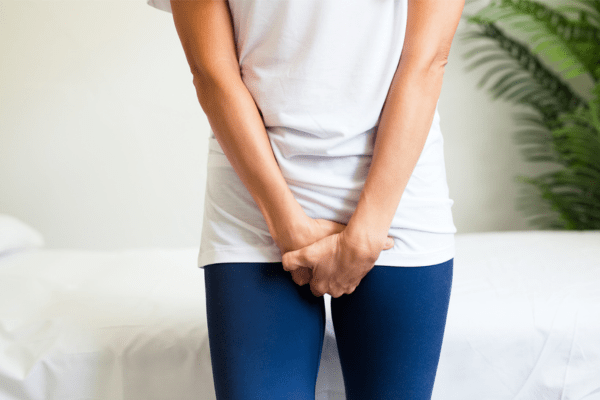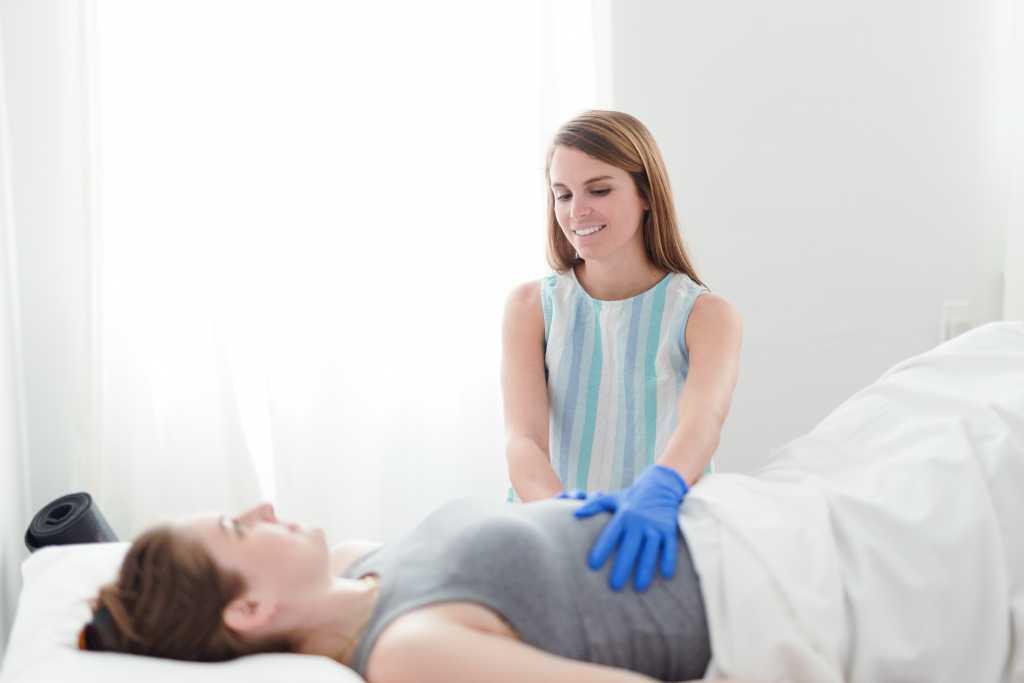Disclosure :: This post is sponsored by NOLA Pelvic Health.
How to Stop the Little Leaks of Urine
 Peeing is a lot like breathing. It happens naturally for most, causing no major disruptions to day-to-day life. For others, who may be experiencing the effects of pregnancy, postpartum, aging, or pelvic floor dysfunction, peeing can be a major problem.
Peeing is a lot like breathing. It happens naturally for most, causing no major disruptions to day-to-day life. For others, who may be experiencing the effects of pregnancy, postpartum, aging, or pelvic floor dysfunction, peeing can be a major problem.
What are Normal Bladder Habits
Problems with peeing can present in many ways: going too often, not often enough, or little leaks at the most inconvenient times. Before we unpack what is not normal with regards to bladder habits, let’s talk about normal and optimal bladder habits.
- The normal frequency to urinate is every 2-4 hours during the day. If you are pregnant, the time between urination may decrease due to the fluctuations in kidney function and pressure on the bladder.
- The normal frequency to urinate at night is 0-2 times, which can also fluctuate with pregnancy, hydration, and age. To decrease those nighttime trips to the bathroom, stop drinking fluids approximately 2 hours before bedtime and empty your bladder before going to sleep.
- Bladder irritants such as caffeine, sugar, alcohol, citrus, spicy foods, and dehydration can increase urinary urgency and bladder spasms. To ensure you are staying well hydrated, aim to drink 1-2 cups of water between bathroom visits during the day.
What are NOT Normal Bladder Habits
Now that you know what is normal, below are some issues that, although common, are not normal:
- peeing too frequently
- waking often at night to pee
- difficulty starting your urine stream
- difficulty emptying your bladder
- pain or burning when urinating
- leakage with coughing, sneezing, running or jumping
- leakage with a strong urge to pee and not making it to the bathroom in time.
If you are experiencing any of the above, your pelvic floor muscles could be the problem. And pelvic floor therapy is the solution to retraining your bladder, relieving pain and saying goodbye to those pesky leaks.

How pelvic floor therapy can help
Many women and moms have bathroom habits that are less than optimal when it comes to peeing. Pelvic floor physical therapists, like myself, educate patients on the proper way to pee (yes, there is a proper way!) and focus on retraining the pelvic floor muscles, depending on what your individual needs are.
My top bladder tips to start right now are:
- Stop peeing “Just in case”– This is when you urinate because it is convenient or you are about to leave a location. When you continuously pee even when there is no real urge, it creates a false urgency and actually causes your bladder to shrink! Then you start to feel like you have to go all of the time even if you just went. Avoid those “just in case” bathroom trips and only pee when you actually have the urge to pee. (Side note: there are times that it can be okay to pee “just in case” like before exercise, long travel, and before or after sex or a pelvic exam).
- Don’t delay the urge to pee – Holding your bladder for longer than 4 hours can overstretch the bladder capacity and reduce your ability to fully empty when you urinate. This may mean you are not hydrating well enough or just delaying the sense of urgency to pee. When you have the urge to go, take a break and go. This is especially hard for teachers and medical professionals, but if possible, try to urinate every 2-4 hours with the urge to go!
- Avoid hovering over the toilet seat – When you hover instead of sitting on the toilet, you prevent full pelvic floor muscle relaxation and the bladder has to work harder to empty. The bladder may hold residual urine, which can lead to urgency and potential urinary tract infections (UTIs). Instead, bringing antibacterial wipes to wipe down public toilet seats, line teh seat with toilet paper, and sit to pee.
- Avoid pushing when you pee – Pushing or straining to get your urine out faster can weaken your pelvic floor muscles. So even though you may feel rushed to pee, sit down, take a few deep breaths, and let the bladder empty for you instead of you pushing it out. Just say no to power-peeing!
Still Having Bladder Issues After Nailing the Basics?
If you are experiencing any of these issues, or hoping to prevent them, come see me at NOLA Pelvic Health to get the help you deserve. Schedule online at NOLA Pelvic Health or call or text (504) 814-3615! Your pelvic floor will thank you!
About the author
Dr. Claire Schott Lusignan is NOLA-born and raised, graduating from Dominican High  School and earning her Bachelor’s of Kinesiology from LSU and Doctorate of Physical Therapy from LSU-HSC in New Orleans. She loves increasing people’s awareness of pelvic health physical therapy, and she wants everyone to have the opportunity to improve their quality of life and well-being. When not at work, she enjoys exercising, being outside, reading, cooking, and spending time with her husband and dog. She is newly pregnant and excited to be adding a new member to the family this summer!
School and earning her Bachelor’s of Kinesiology from LSU and Doctorate of Physical Therapy from LSU-HSC in New Orleans. She loves increasing people’s awareness of pelvic health physical therapy, and she wants everyone to have the opportunity to improve their quality of life and well-being. When not at work, she enjoys exercising, being outside, reading, cooking, and spending time with her husband and dog. She is newly pregnant and excited to be adding a new member to the family this summer!
















